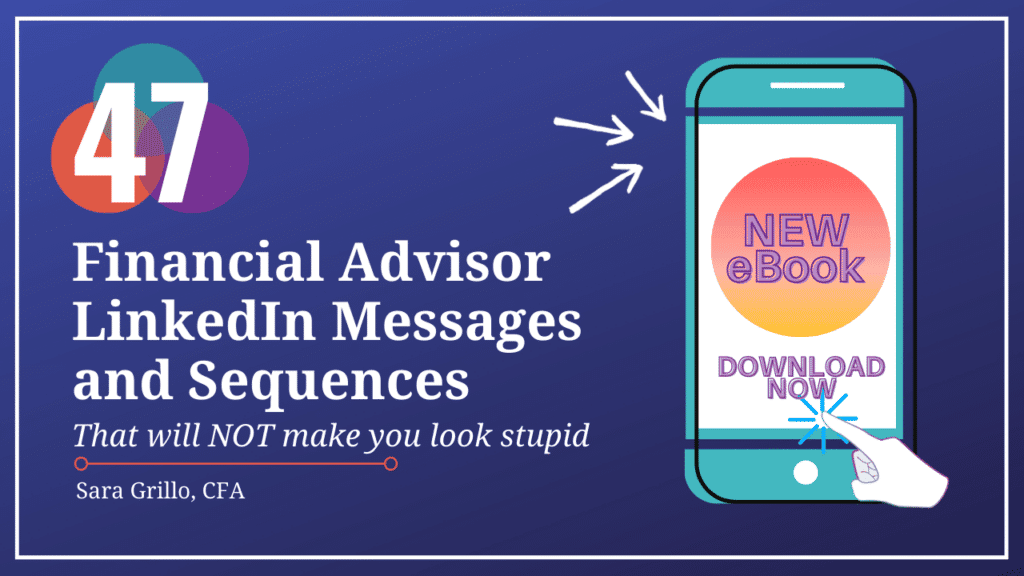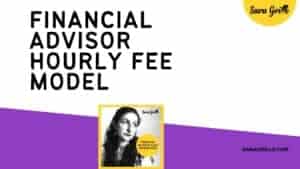Podcast: Play in new window | Download
In this podcast/blog about financial advisor profitability, you are going to learn the three ways that financial advisors can stop getting breadcrumbs when you’re hungry for the feast.
Before we get started, thanks for visiting me. My name is Sara. I write blogs on the topic of financial advisor lead generation and practice management, so please subscribe to my podcast to be notified that way you won’t miss the real story!

What to expect out of this blog about financial advisor profitability
In this blog you will learn:
- Why the typical ways that financial advisors assess their success are lacking, and what the best metrics are to evaluate the success of your business
- Run your business like a profit center not a sales office
- Working with fewer clients may be the best thing for your business. Consider how your service offering is impacting your profitability and potentially allowing you to become breadcrumbed – and what to do about it.
So without further ado – let’s get into it!
#1 Stop setting revenue goals
In this podcast, I interviewed Dan Cuprill. In addition to being a financial advisor himself, Dan runs a firm called Advisor Architect which helps financial advisors increase their profits. Dan’s first word of advice for financial advisor profitability is to stop setting revenue goals – set profit goals instead.
Dan is really speaking to the established financial advisor. If you set a profit goal, and you look at your expenses, it amazes me how few advisors (even if they have Quickbooks), never really study their expenses. Put on your CFO hat, Cuprill says, and look at where your money is going. There are probably significant amounts of waste you can cut out just by taking the time to look at your expenses.
If you set the profit goal first, you’re likely going to find yourself not having to work nearly as hard to hit that number (assuming you already have established revenue). Now, you may still need to bring in more revenue to hit that goal. But you are going to be amazed at how much waste you are going to minimize.
Lastly, you have to track it. You have to track your revenue and profitability. You can’t keep all your revenue sitting in your business account. If you do that you will waste it. If you set a budget from the beginning of the year, and if that budget predetermines that 40% of all budget will go towards operating expense, then you only keep in your business 40% of all incoming revenue. As soon as you get paid 60%, leave. And if you do that, you will force yourself to manage your business like a profit entity.
Do these things – set profit goals and track them – and you probably are going to find that you have more staff than you need, especially if you are an established practice. It blows Cuprill’s mind when he sees businesses smaller than his (he has roughly $200MM in AUM at the time of this recording) with 6 or 7 admin people. It makes no sense.
But you financial advisors sure love your admins!
There is an ego gratification from knowing that you are employing all these people. Also, it’s the vendors. The FMO’s, the broker dealers, the turnkey asset managers. They are the ones encouraging this. They love it when financial advisors have high overhead. Why? If you have high overhead, you can’t stop marketing yourself. You have to keep going faster and faster.
Most advisors aren’t even good clients to themselves. Many financial advisors have almost $1MM in revenue coming in and they are a step away from being broke themselves. They’ve never built up their own net worth. They got caught up in the game. Most of them believe that someone is going to show up and write a huge check for their practice. Usually they don’t. Many advisors will go into debt or raid their personal savings just to sustain their businesses.
How do you know what your profitability number should be?
Some advisors just put every single expense on their American Express card and turn it over to their accountant at the end of the year. It’s okay if your accountant crunches these numbers for you, but you have got to be the analyst yourself. Every single month, run a budget vs. actual expense analysis and look at where you were off. Make decisions going forward.
Key takeaways of profit goal setting:
Set a profit goal, develop an operating budget, and manage it quarterly. Track it on an ongoing basis. Most importantly, make sure that your profitability comes out of your business and use it to invest for yourself or to pay off your debt. Either one will grow your net worth.
Cuprill loves the book Profit First by Mike Michalowicz which is the source of many of the ideas he discusses in this podcast.
#2 Run it like a profit center not a sales office
Many people run their financial advisor profitability down by running them like sales offices. This happens when success is defined by things like the number of appointments you have. Or even the number of clients you have without giving any thought to whether or not at the end of the day you are making money.
There’s a lot more to running a business than just hitting a sales goal. But that’s the mentality that we have in this profession and it’s largely because that’s the environment that the vendors create. What’s in their best interest isn’t necessarily what’s in the advisor’s best interest. Even if you love your vendors, understand that they have goals that are completely different from yours.
We get way too much advice only from within the industry. This industry rarely challenges the status quo. Cuprill has looked at the most successful advisors – he’s studied them – and by many standards they aren’t even successful. But they believe that because they have a large staff and that they are always on the stage. But if you look at the amount of money they actually make and their net worth, we’re not setting goals in the right order.
For many advisors, doubling the AUM you gain is not the way to double your take home pay. It is just not.
#3 Should you work with fewer clients?
Cuprill has over 200 clients in 20 states and over $200MM in AUM. He has just one highly talented administrative person. He says that 90 clients is a manageable number for many advisors because many of them are unable to remove the busywork from their workflow, something he has been able to do successfully.
The way that you get more revenue from fewer clients is you establish from day one how you are going to work with a client. First of all, it still amazes Cuprill that there are people who call themselves financial advisors and they do not charge any type of fee for financial planning. That means they are salespeople.
The typical line is, “I’ll do all the analysis you want; only if you implement then will I get paid.” There are so many problems with that. Note that both broker dealer reps and RIA firms do this. The reason that you want to charge that fee, more than any other, is that is the first step in making sure that you manage 100% of their money.
When you decide that you are going to take whatever the client throws your way, again you are not being an advisor. You’re being a salesperson. Imagine going into a doctor’s office and you say, “Hey doc, I just want you to work on the left side of my body today.” This is the kind of thing that advisors allow. Or if the doctor says, “I don’t charge for the visit. I only charge you if I write a prescription.” Are you going to feel comfortable with that physician?
If you are going to maximize your revenue and financial advisor profitability, you have to work with people who want to work with you fully. That means you manage all their money and you are going to charge them a fee to do planning.
There are financial advisors who just work with clients on investments and not planning. The retention factors is lower for these types of practices. It set ups you up for being more on the hamster wheel than a planning focused business does. Because you can’t predict the future, you are going to have moments of disappointing performance with your clients.
Only work with people where you manage all their money. Don’t get breadcrumbed around by clients who won’t commit the whole thing. Don’t let them “try you out.”
The most powerful word in marketing is “no.” Everybody can tell when you go into a meeting and you will take whatever you can get. It sets the expectations for the standards you have and for how they are expected to behave. You have to be strong enough to say this word if you want to run your practice a certain way.
Don’t be the person who will take any crumb that they will throw their way! You will set yourself apart from all the other advisors who don’t have the courage to stand up for the integrity of their business this way.
Conclusion on financial advisor profitability
What’d ya think? Was this helpful?
If yes…
Learn what to say to prospects on social media messenger apps without sounding like a washing machine salesperson. This e-book contains 47 financial advisor LinkedIn messages, sequences, and scripts, and they are all two sentences or less.

You could also consider my financial advisor social media membership which teaches financial advisors how to get new clients and leads from LinkedIn.

Thanks for reading. I hope you’ll at least join my weekly newsletter about financial advisor lead generation.
See you in the next one!
-Sara G
Music is Crystal by Vice Tracks





